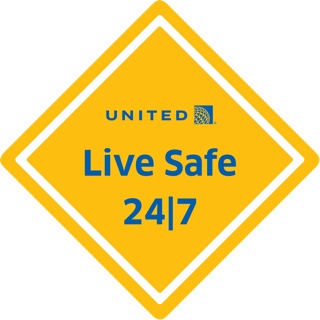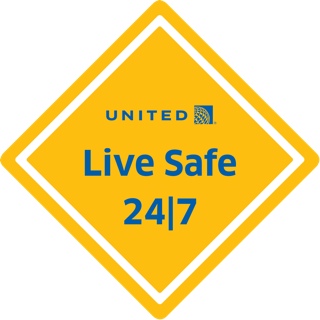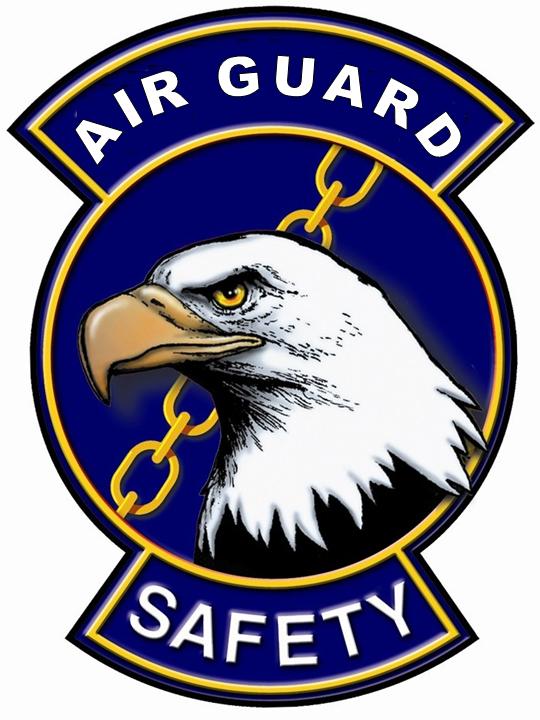Information
-
Document No.
-
Conducted on
-
Prepared by
-
Station address code
-
Aircraft Tail Number
-
Aircraft Flight Number
-
Arrival, Departure, Both - select one
All ramp personnel- General Ramp Safety
-
Hearing protection being worn
-
Safety vest being worn
-
Proper body mechanics being utilized to reduce potential injuries ( lifting,pushing,pulling)
-
Tractors make safety stop (1) when entering OSZ. RSM chapter 2 pg 6 and Chapter 6 pg 18
-
3' no drive zone is observed while positioning GSE
-
GSE is operated at a walking speed while in the Aircraft Buffer Zone
-
Vehicles with limited vision utilize a guide person in aircraft buffer zone
-
Safe movement of baggage carts (string size <4, curtains closed)
-
Occupants keep all body parts inside the profile of the vehicle when driving
-
Brakes are set and functional on all parked ground equipment ( carts, dollies, vehicles, GPU, Conditioned Air etc.)
-
United Airlines Vehicle operator(s) and occupants utilize seat belts when installed outside of OSZ
-
Only vehicles and equipment necessary to service the aircraft are operated within the OSZ
Ramp Personnel Belt Loader Operation
-
Belt loader completed safety stop entering into OSZ ( 1 stop) RSM Chapter 2 and Chapter 6
-
Belt loader positioned properly to aircraft for arrival process a minimum of 1 inch from bumper and door sill
-
Belt loader positioned properly to aircraft for departure process - Belt loaders that have been specially modified may be placed inside the compartment on mainline aircraft - must have D style bumpers and plastic protective guards on the bottom of the boom RSM chapter 6 pg 22
-
RSE stop movement of the belt loader to adjust boom height
-
Safety hand rail in down position (except fixed rail) when positioning belt load to aircraft
-
Safety hand rail in down position (except fixed rail) when removing belt load from aircraft
-
Safety handrail in down position when belt loader is in motion
-
Belt loader hand rail in up position when personnel is on belt transiting into or out of cargo compartment
-
Belt loader chocked/brake set/ gear lever in neutral when positioned at aircraft
-
RSE observe requirement to not ride on moving belt
-
Hand rail lowered and belt loader moved away from aircraft before closing door ( exception 757 boom and safety rail must be in down position, belt may be repositioned at aircraft to operate door
Ramp Personnel - Container Loader Operation
-
Container loader made full safety stop while entering into OSZ
-
Container loader positioned correctly at aircraft (1 inch gap)
-
Container loader driven with all platforms fully down
-
Safety handrail in down position when driving the loader
-
Safety hand rail down when operating the cargo door
-
Safety hand rail in up position and extended while loading / unloading aircraft ( extension arm (if applicable) not greater than 6 inches from aircraft)
-
Platform guard rails up and aligned with aircraft lateral guides
Ramp Personnel- Loading
-
Allowed 2" clearance between top of cargo/bags and ceiling of pit. ( Airbus A319/320 and ER170)
-
RSE adhere to orientation markings (this side up)
-
Pit nets secured inside cargo compartment when windy or aircraft unattended
-
DG cargo secured to prevent shifting or movement
-
Live animals secured from shifting or movement
Bag Runners/ Cargo Personnel
-
Bag runner wearing hearing protection
-
Bag runner wearing safety vest
-
Bag runner wearing seat belt as required
-
Bag runners observe the 3' no drive zone
-
Bag runner performs safety stop before entering OSZ
-
Cargo runner wearing hearing protection
-
Cargo runner wearing safety vest
-
Cargo runners observe the 3' no drive zone
-
Cargo runner performs safety stop before entering OSZ
-
Cargo runners wearing seat belt as required
Catering Operations/ Personnel
-
Catering personnel wearing hearing protection
-
Full safety stop made prior to entering the OSZ
-
Personnel wear safety belts (as applicable per company standard)
-
Catering truck observe 3' no drive zone
-
Catering truck operated in aircraft buffer zone <walking speed
-
Catering truck positioned to aircraft properly (>6" not touching)
-
Removed any FOD dropped on ground by catering personnel
-
Safety rails and platforms used maximum
Cleaning Operation/ Personnel
-
Cabin service employees wearing hearing protection while in exposure area (ramp)
-
Fully safety stop made prior to entering the OSZ
-
Personnel wearing seat belts as required
-
Cleaning truck observed 3' no drive zone
-
Cleaning truck operated in Aircraft buffer zone <walking speed
-
All FOD dropped on ramp by cleaning personnel picked up
-
Passenger doors opened / closed from outside of aircraft, safety check performed before opening and after closing
Customer Service Operation/Personnel
-
Customer service agent operating jet bridge does not move from designated parking spot until the all clear, clear to approach signal is given
-
Customer service personnel wearing hearing protection while on the ramp or positioning jet bridge
Flight Operations
-
Flight crews wearing hearing protection while performing duties on the ramp
-
Flight crews wearing safety vest while performing duties on the ramp (as applicable)
-
Flight crews do not step over tow bars, cart tongues, or between carts while performing duties on the ramp
Fueling Operations/ Personnel
-
Fueler wearing hearing protection
-
Fuelers wearing seat belts as required
-
Full safety stop made prior to entering the OSZ
-
Fuel truck observed the 3' no drive zone
-
Fuel truck operated in aircraft buffer zone <walking speed
-
Fuel truck observes the 10' safety zone (no parking) around fuel vent
-
Fuel truck daily users check completed
Lavatory Servicing / Personnel
-
Lavatory service personnel wearing hearing protection
-
Lavatory service personnel wearing appropriate PPE ( gloves, face shield etc. )
-
Lavatory service vehicle observed 3' no drive zone
-
Lavatory service vehicle conducts full brake stop before entering OSZ
Potable Water Servicing / Personnel
-
Potable water service personnel wearing hearing protection
-
Potable water service truck observe the 3' no drive zone
-
Potable water service vehicle conducts full brake safety stop prior to entering the OSZ
-
Potable water service personnel wearing seat belts as required
Technical Operations Personnel
-
MX personnel wearing hearing protection
-
MX personnel perform full safety stop prior to entering OSZ
-
MX vehicles observe the 3' no drive zone
-
MX vehicle operated in aircraft buffer zone < walking speed
-
MX man lifts positioned to aircraft properly (>1" / not touching
-
MX personnel use appropriate fall protection on man lifts or working from heights
-
Remove any FOD/ items dropped during servicing of aircraft
-
MX personnel wearing seat belts as required


















